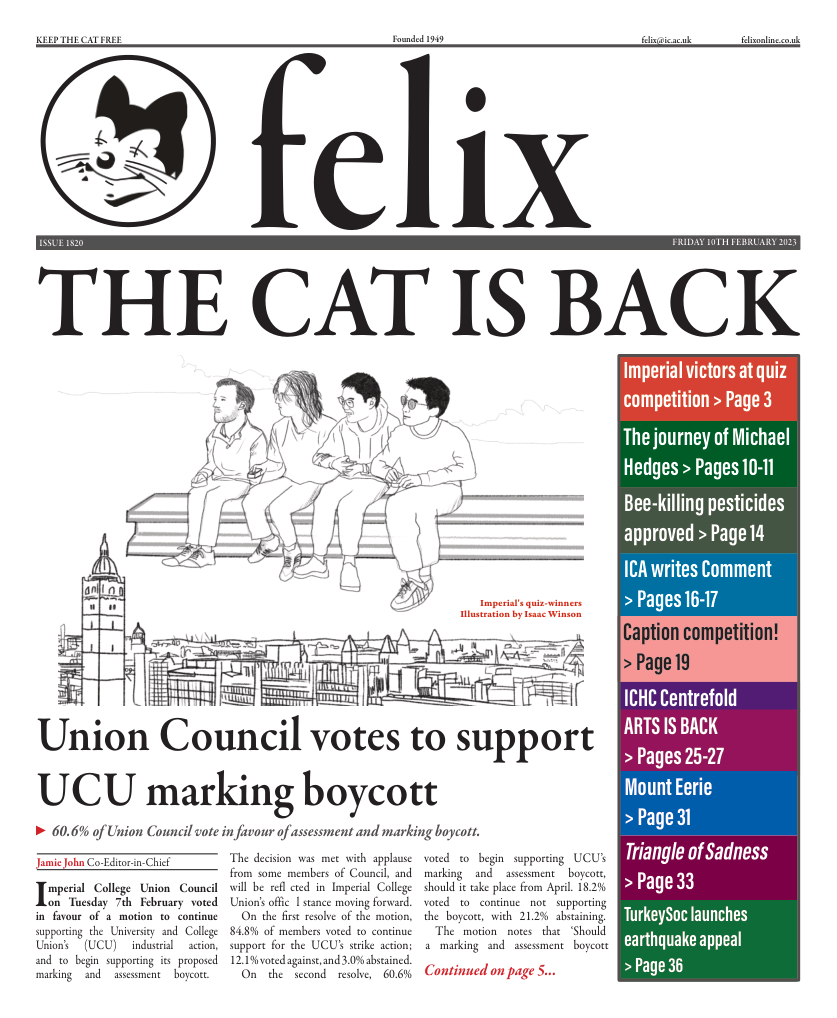How to avoid the worst air pollution when travelling around London
The air pollution problem on the Underground is worse than we thought. Here's how to reduce your pollution exposure and advocate for a cleaner city.
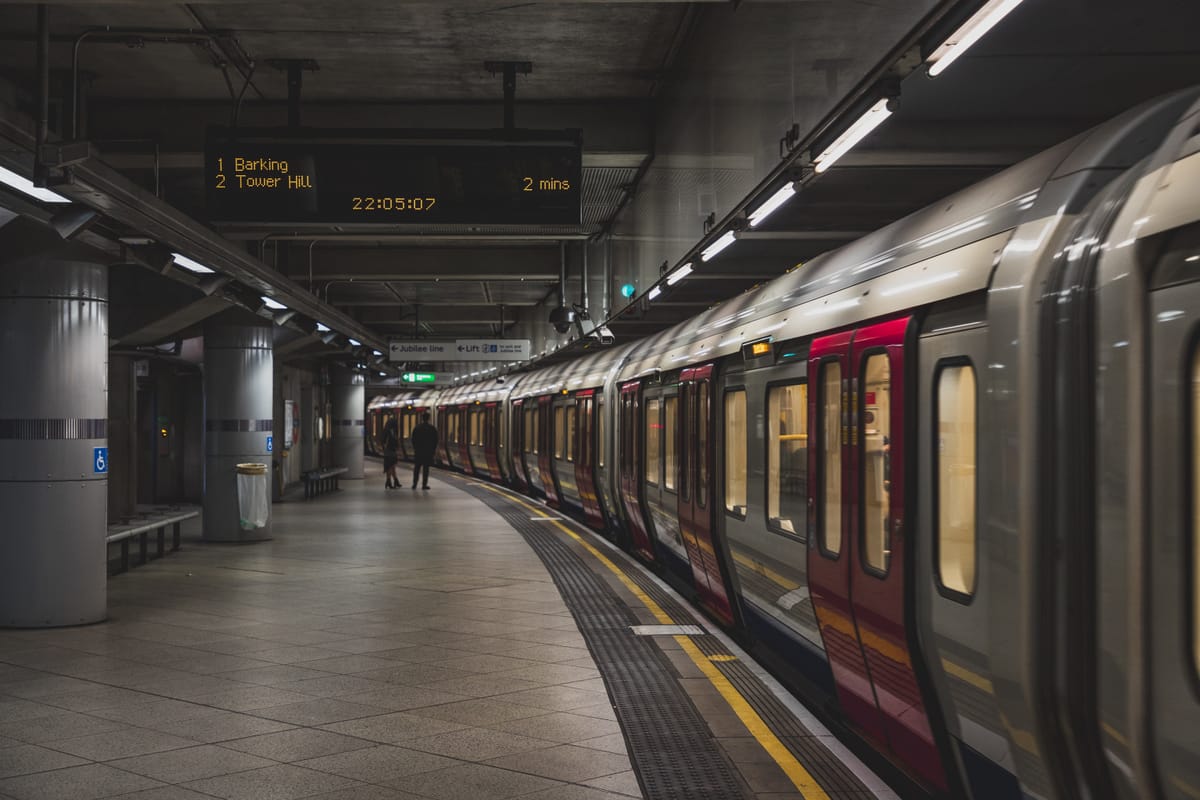
Pete Knapp is a PhD student in the Department of Civil Engineering at Imperial, investigating the electrical charges of aerosol particles.
Healthy travel produces the least pollution, moves your body, and reduces risk to yourself and others — including exposure to air pollution. A recent study reported on by Felix, on air pollution in the London Underground stated that levels of airborne particulate pollution were “more than double the WHO’s recommended limits”. But the reality is unfortunately much worse.
In the reported study by Kumar et al., it is unclear if the instruments were calibrated to the underground environment before measuring. But calibration of the instruments is crucial to get accurate data. Kumar et al. found that levels of PM2.5 (denoting particles small enough to reach the alveoli in the lung) at the South Kensington Piccadilly line underground platform were between 40-50 μg/m3; whereas a previous study by Smith et al. from King’s College (now absorbed into Imperial’s Environmental Research Group) used calibrated apparatus and found this value to be 178 μg/m3 — which is four times greater.
Levels of PM2.5 can be remarkably high in the London Underground. This is because air can get trapped in the tunnels, and dust created by brakes, wheels, and sparking from electrical connections is always disturbed by regular trains kicking it up. The highest value recorded in the Smith study was 885 μg/m3, whereas the WHO guideline for 24-hour exposure is 15 μg/m3 , and annual exposure just 5 μg/m3.
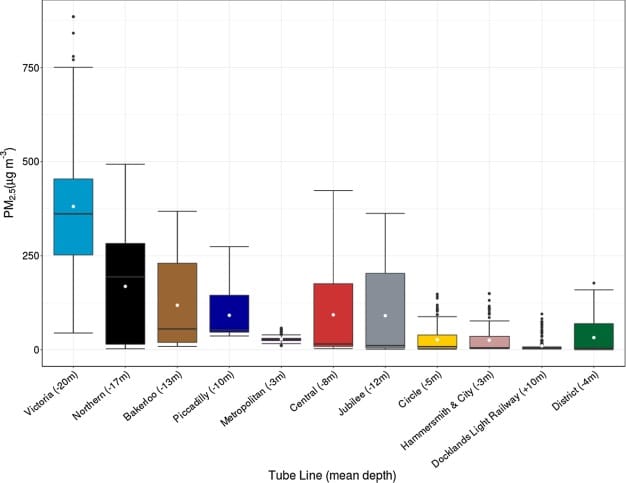
Roadside levels in London average 14 μg/m3 of PM2.5, but are more likely to have much bigger problems with other pollutants such as NO2 and ozone. All of these pollutants cause inflammation, which in turn increases the risk of asthma, dementia, strokes, diabetes, cancers, and many other diseases.
The UK Department for Environment, Food, and Rural Affairs (DEFRA) has classified the Tube as an ‘indoor environment’ that currently has no guideline limit for any air pollutants. With two million people using the Tube every day, and people spending roughly 90% of their time indoors, DEFRA should focus on setting indoor air pollution thresholds as a priority.
The Clean Air (Human Rights) Bill, informally known as ‘Ella’s Law’ after Ella Kissi-Debrah, a 9-year-old girl who died of air pollution, has passed through the House of Lords with exceptionally strong cross-party support. The bill addresses indoor air, therefore including the London Underground, and establishes the human right to breathe clean air precisely and explicitly in UK law. It would require the Secretary of State to achieve ‘clean air’ throughout England and Wales within five years of the passing of the Act and maintain it thereafter.
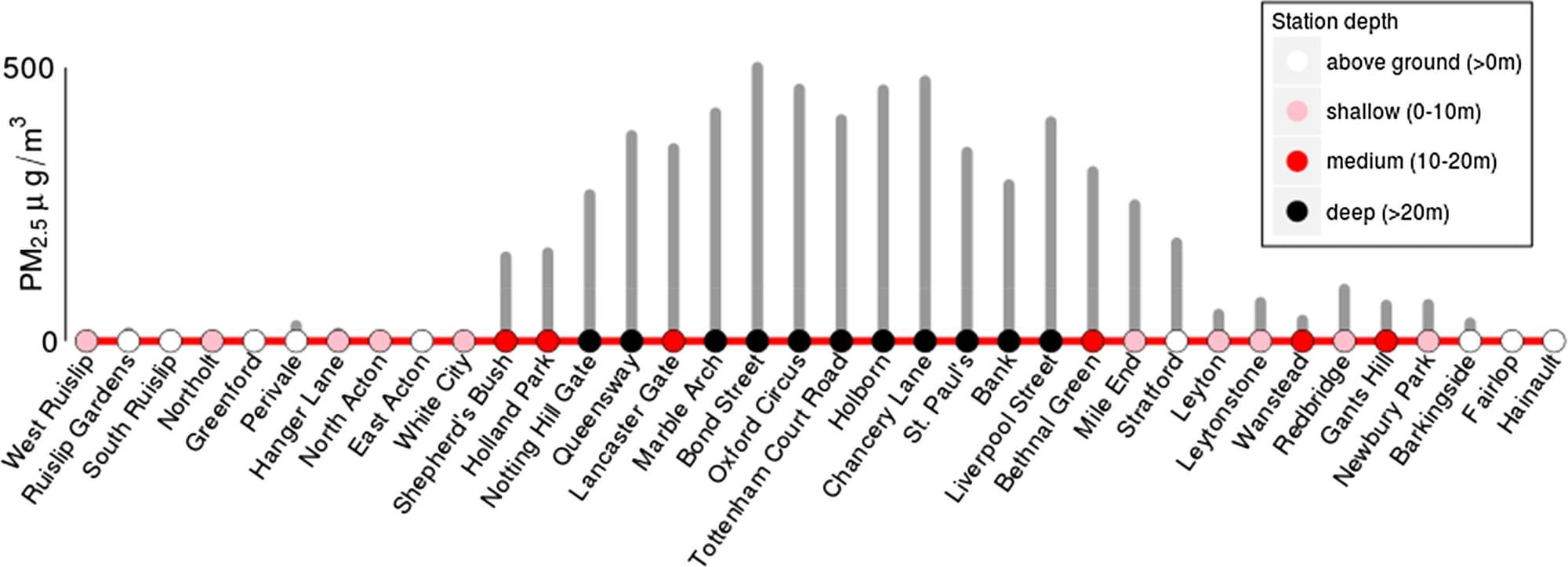
More on Underground air pollution: the toxicology of the dust is not well understood. The solubility of particulate matter, for example, may play an important role as more soluble pollutants may create more inflammation in the lung’s inner surface. The particles in the Underground are mostly metals with low solubility, which may reduce relative toxicity.
However, toxicology studies from 2005 showed Tube dust has ‘cytotoxic and inflammatory potential at high doses’. The health effects of magnetite — one of the most common forms of particulate matter found in the Tube — have been linked to Alzheimer’s as well as magnetite nanoparticles being found in the brain. A recent study showed that dust from the Bakerloo and Jubilee lines made mice more vulnerable to deadly bacterial infections. More conclusive toxicology studies on Tube dust are currently underway at Imperial College.
Overall, cycling is the best way to get around London, if this option is available to you. It is normally the quickest, cheapest, and healthiest method.
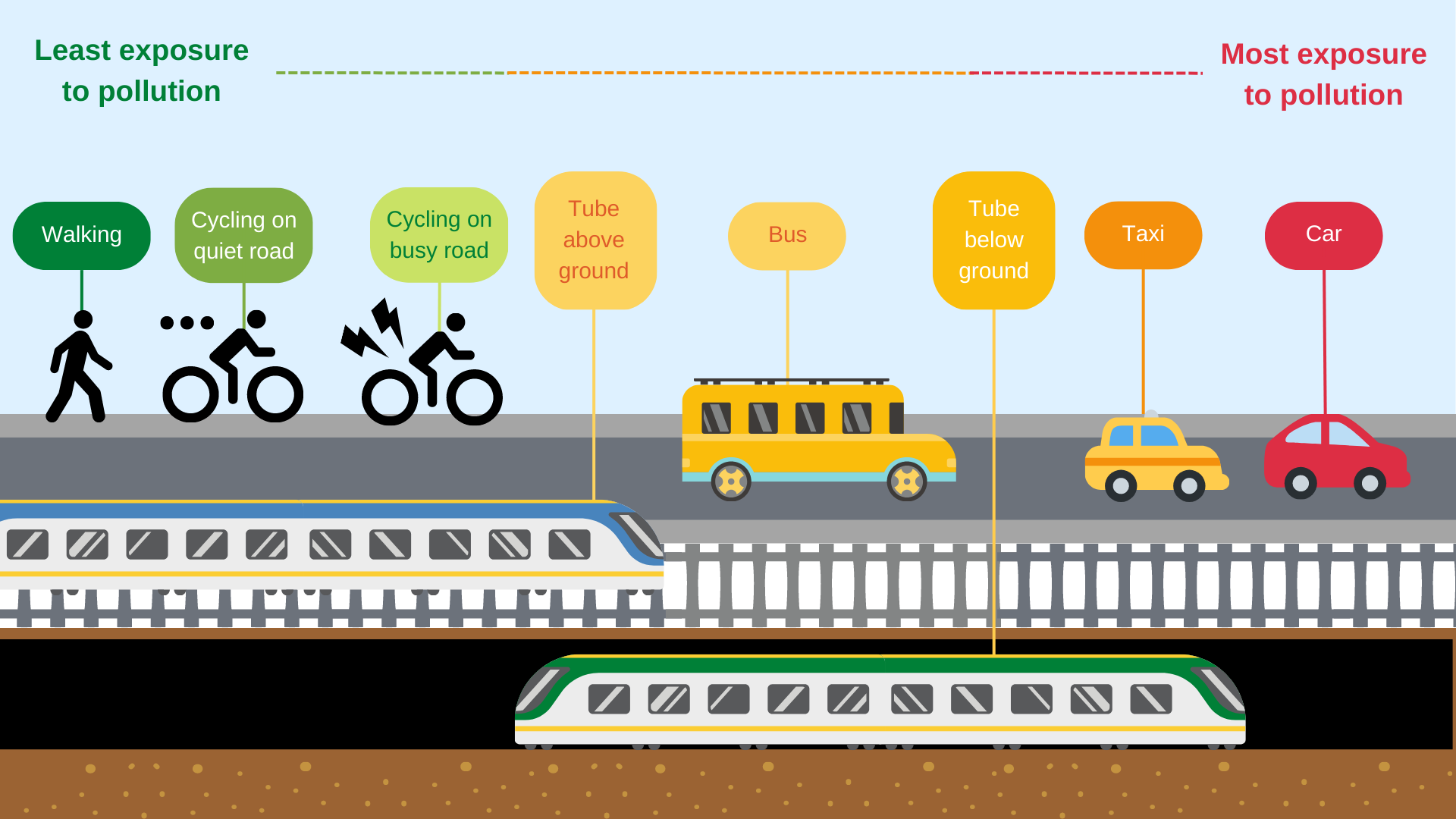
For journeys that can’t be walked or cycled, the bus is likely the least polluted option. If you need to take the Tube, know that the lines above ground are least polluted, and lines deepest below ground are most polluted. Avoid long, deep journeys. See the diagrams for more guidance.
The worst option by every metric is to travel by car: it is the most polluting, exposes you to the most air pollution, causes the highest carbon emissions, is the least space efficient, most expensive, causes the most congestion, and causes the most fatalities.
Let’s be clear: public transport is the way forward. Knowing our exposure to air pollution helps to make the best choices.
For healthier travel and safer streets, campaign for more cycle-friendly infrastructure and support those who are already doing it. Spend £90 a year as a student to use the Santander docking cycles, which give you 1 hour of free cycling. Wait five minutes to get another free hour. To be more confident cycling, there are free courses from TfL. For more information about the London Underground, and air pollution in general, please see my webpage.

